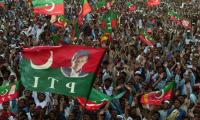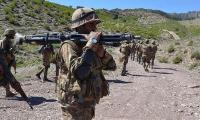Independence Day
LAHORE: Independence Day is a reminder to pessimistic Pakistanis that the country made its mark among the comity of nations by building from ashes through dedication and hard work. Current economic conditions in Pakistan are much better than in 1947.
They should not lose heart as we can regain the growth momentum if the same national spirit is rekindled. Pakistan has come a long way from almost zero industrial bases in 1947 to a creditable manufacturing centre more on the strength of its huge economic potential than government policies that continue to favour the rich.
Pakistan inherited 20 percent of the subcontinent's population at the time of partition of India on August 14, 1947. However, her share in industry was less than seven percent, mostly consisting of small-scale and minor industrial units.
No creditable large industry existed in Pakistan at the time of its birth. Pakistan that included East Pakistan (now Bangladesh) as well had only 34 factories. The total employment provided by these factories was around 26,400 (currently numerous industries in Pakistan employ more workers than the total industrial employment in 1947 when its population was around 80 million).
In 1947 Pakistan did not have a single ordnance factory and the remark can almost be stretched to include major installations of every sort. The east wing produced 70 percent of the world's jute, but there was not a single jute mill and West Bengal (India) was almost the sole buyer. In the west wing, only 16,000 of the total 1,500,000 cotton bales produced could be processed domestically. The new state did not even have its own bank and depended on the reserve bank of India.
Industrialising the country was a challenge that founding economic managers having very little economic knowledge undertook with sincerity. The country achieved high growth rates in manufacturing in Pakistan for 1950-55 that was, to some extent, a statistical artefact as the country started from an exceptionally low industrial base in 1947. Nevertheless, credit must be given to the planners of that time for facilitating industrial growth with scarce resources.
Experts point out that the feudal culture in Pakistan remained dominant, and did not allow the growth of a strong middle class that is the hallmark of all successful East Asian economies. Income and opportunity inequalities still exist in present day Pakistan. This is the reason that though Pakistan’s authoritarian institutions had many features similar to contemporary East Asian states, in particular South Korea, its long run performance was poorer than in the industrialised East Asian states.
Agriculture sector suffered in the initial 10 years due to official neglect in resource allocation. Heavy tariff protection and tax benefits accelerated industrialisation.
Average agriculture growth during 1950-58 was 1.4 percent. Industrial growth during the same period was 19.1 per cent. Miserly allocation for education and health set a pattern of neglecting social sectors that still continues.
Pakistan has since then come a long way. It has a creditable ordnance factory, vibrant steel, plastic and auto-industries. We are producing tractors, cars and motorcycles. We have a world class textile industry. We are producing fertilisers, chemicals, sugar, and cement. Still the economy is in turmoil.
We have been exploited by the corrupt politicians, dictators and bureaucrats that have parked cumulative assets of around $250 billion outside the country that is equivalent to the total size of Pakistan’s economy.
We have a non-documented economy larger than the size of our documented economy. Currently the economy of the country is in turmoil and despair is largely seen in the eyes of the general public as well as genuine entrepreneurs.
Let us just look at the potential of this country. Pakistan is the 9th largest producer of wheat in the world, fourth largest producer of milk, 12th largest producer of rice and is among top six exporters of the commodity. It is the 4th largest cotton producer and 3rd largest cotton consumer in the world. It has the largest integrated canal irrigation system around the globe. It has the largest rock salt deposits in the world, its coal reserves are the fourth largest on this globe, and it is the most efficient producer of cement in the world. All that is needed is will on the part of those in the power corridors to bring things on track.
A worker checks a vehicle at a workshop. — AFP/FileKARACHI: During the three-day Automotive Aftermarket Products...
Gold bars from the vault of a bank are seen in this illustration picture taken in Zurich, Switzerland, on November 20,...
The IMF’s logo can be seen at its headquarters. — AFP/FileCOLOMBO: The International Monetary Fund approved the...
CEO of Nvidia Jensen Huang speaks after receiving an honorary degree from Hong Kong University of Science and...
Commuters are facing difficulties in transportation due to stagnant rainwater causing of poor sewerage system after...
Cyril Ramaphosa Chinese President Xi Jinping, and Australian Prime Minister Anthony Albanese pose with other G20...







